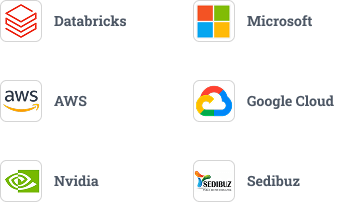While the field of AI was formally founded in 1956, at a conference at Dartmouth College, in Hanover, New Hampshire, we can find traces of the AI conversation in the attempts of classical philosophers to describe human thinking as a symbolic system. Right from the Wizard of OZ (think the Tin Man) to Gulliver’s Travels (think the engine on the island of Laputa) to the demonstration of the world’s first radio-controlled vessel by Nikola Tesla at Madison Square Garden, or Houdini’s radio-controlled driverless car…the early days of Artificial Intelligence have been a topic full of intrigue.
The Early Days
Over the years, philosophers, scientists, and mathematicians assimilated the idea of Artificial Intelligence. It was in the 1950s when Alan Turing suggested that just like how humans process data for information and decision-making, machines could do the same. He discussed this idea in his paper Computing Machinery and Intelligence. However, it took time to establish the proof of concept and it was in the Dartmouth Summer Research Project on Artificial Intelligence (DSRPAI) that an open-ended discussion on the technology took place and the term Artificial Intelligence was coined.
In the initial years of AI, from 1957 to 1974 the conversation around AI picked up steam. Computers became more accessible and cheaper and could also retain more information. The applications, quite naturally, remained basic relegated to primarily the goals of problem-solving and the interpretation of spoken language. However, the high goals of natural language processing, self-recognition, and abstract thinking were still a long way off. This was mainly because of the lack of computational infrastructure and the incapability to process information fast.
The Wonder Years
The progress of AI continued at an intermediate phase there onwards. It was in 1979 that The Stanford Cart crossed a chaired room without any human intervention becoming the earliest example of the autonomous vehicle. In 1980 the Wabot 2, a musician humanoid robot that could communicate with people, play tunes and read musical notes was built in Waseda University in Japan. 1986 saw the first driverless car built at Bundeswehr University in Munich that could drive up to 55 mph on empty streets. The 80s saw a great deal of progress in AI with researchers building multi-layer neural networks and statistical approaches to language translation amongst others.
Despite the absence of or limited government funding AI managed to thrive. The 1990s and early 2000s saw many landmark goals of AI being achieved. In 1997, IBM’s Deep Blue defeated the world chess champion and grandmaster Gary Kasparov. In the same year, Windows implemented speech recognition software, developed by Dragon Systems. Progress in AI was happening and happening fast.
The reason behind the accelerated pace of AI maturity could be attributed to the fact that computer storage was no longer holding us back as it did 30 years back. With technologies such as the Cloud becoming mainstream and the power of big data analytics, AI had got its enablers of success. As data emerged as the new oil of the 21st century, enterprises realized that they needed faster analytical capabilities. Then came the time that faster analytics was not enough. We needed the algorithms analyzing this data to become faster and self-learn as well. And while it has taken us almost 70 years to identify the combination of factors that need to come together to move AI from a concept to a ubiquitous reality, the time is finally here.
In 2008, a small Google App with speech recognition heralded a breakthrough for AI. Google has finally managed to lift the 80% accuracy of speech recognition to a ground-breaking 92%! In 2011, IBM’s Watson won the won the U.S. game show Jeopardy and this win was hailed as a major triumph for AI. Today, we have AI integrated into our daily life. Our smartphone assistants are powered by AI. AI is running our voice-based gadgets such as Alexa. AI is making facial recognition possible.
Where We’re Heading
And while all the progress seems to be on the consumer-centric front with new objects and new devices and self-driving cars, AI was wheedling its way into the enterprise and changing the way organizations function. Right from augmenting automation to changing business processes and impacting decision-making, the AI impact in the enterprise has been hard to ignore. Retail has been proactive in using AI-powered chatbots and has used the technology for demand mapping, customer intelligence, marketing, advertising, and campaign management, pricing, and promotion strategies. Finance and banking are using AI aggressively for fraud detection and management, risk management, trading, and financial advisory management.
AI is also driving the automobile industry becoming the engine of value for automobile companies. Right from infotainment systems to adding cognitive capabilities in cars, predictive maintenance, geo-analytic capabilities, our cars are getting smarter and safer owing to AI. At the back end, AI is driving process optimization leading to better productivity and greater value. It is helping automobile manufacturers with predictive maintenance to reduce downtime, better product design capabilities, and less waste. It also optimized the supply chain.
The healthcare sector is also leveraging AI heavily. With the Smart Hospital concept maturing fast, AI is the technology that will make the hospital environment safer, smarter and more optimized for better patient satisfaction and outcomes. From nursing assistants, connected control centers, automation systems for proactive alarm and outages monitoring, AI is acting like the spine of the Smart Hospital framework.
With a growing sensor-driven environment, the greater proliferation of IoT and the greater maturing of AI technologies such as Machine Learning, Deep Learning, Neural Networks, Speech recognition, Text Analytics and Natural language processing (NLP) etc., AI is surely and steadily going to ingrain itself into the synapse of the entire enterprise architecture. This year we can see a growing confidence in this smart and predictive technology as it brings on the table the promise of transformational change.



